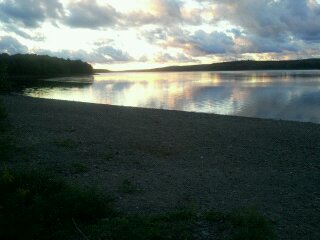Drought Forces Temporary Closure of Lower Fly Section to Protect Salmon Run
Ongoing drought conditions in the Salmon River watershed have forced Brookfield Renewable in collaboration with the New York State Department of Environmental Conservation (DEC) to reduce the amount of water released to the Salmon River from the Salmon River Reservoir starting Thursday, September 29. |
Boat launch in Redfield 2 weeks ago.
Now 25' from end of ramp to waterline.
|
"New York's fish hatchery system is a vital part of our effort to sustain our popular and economically important recreational fisheries," said DEC Commissioner Basil Seggos. "The reduced water flows and closure will help ensure that adequate numbers of salmon enter DEC's Salmon River Hatchery in order to provide eggs for salmon stocking that support Lake Ontario and tributary fisheries."
A 2007 study estimated the value of these fisheries to New York State's economy at $12.9 million. DEC is concerned that unintentional fishing mortality of Pacific Salmon could impact egg take operations if too much water is released.
 |
| The parking area at Rt. 285 and R.t 17 in Redfield. |
The ¼-mile section of the Salmon River that comprises the Lower Fly Fishing Area is located immediately downstream of the Salmon River Hatchery and upstream of the County Rt. 52 Bridge in Altmar. The upper boundary of the area is just downstream from Beaverdam Brook. This location is a staging area for various species of fish, including Chinook and coho salmon, as they prepare to enter the hatchery via Beaverdam Brook. The closure will remain in effect as long as flow reductions are necessary.
Flows will be increased as soon as rainfall patterns change and reservoir water levels necessary to maintain these flows are restored. The Lower Fly Area will be reopened when flows permit and Salmon River Hatchery egg-take operations are completed.
 |
|
The tree stump in the middle of the cove is now 6' out of
the water, in two weeks time.
|
Should salmon returns to the hatchery be inadequate, DEC has developed a contingency plan to secure additional salmon eggs from other Lake Ontario tributaries. Further information on these actions can be obtained by contacting the DEC Fisheries Unit in Cortland.
DEC Press Release - 9/30/2016; (photos by Upland Guide Service - (315)271-1212)